Box turtles may be gentle and adorable, but those two positives don’t mean much if a pet grows too large for you to handle.
So, just how large do box turtles get? Do they stay tiny critters their entire lives, or do they transform into heavy, unwieldy monsters upon reaching sexual maturity?
Thankfully, box turtles remain small creatures throughout their lives, averaging 5 to 7 inches once fully mature. Depending on its subspecies, however, your pet may be slightly larger or smaller. The ornate box turtle, for example, typically reaches a maximum length of between 4 and 6 inches, while the Gulf Coast box turtle can grow to a whopping 8.5 inches long!
It’s crucial to note that how big your reptilian friend grows depends on several factors. Keep reading to know the ins and outs of box turtle size!
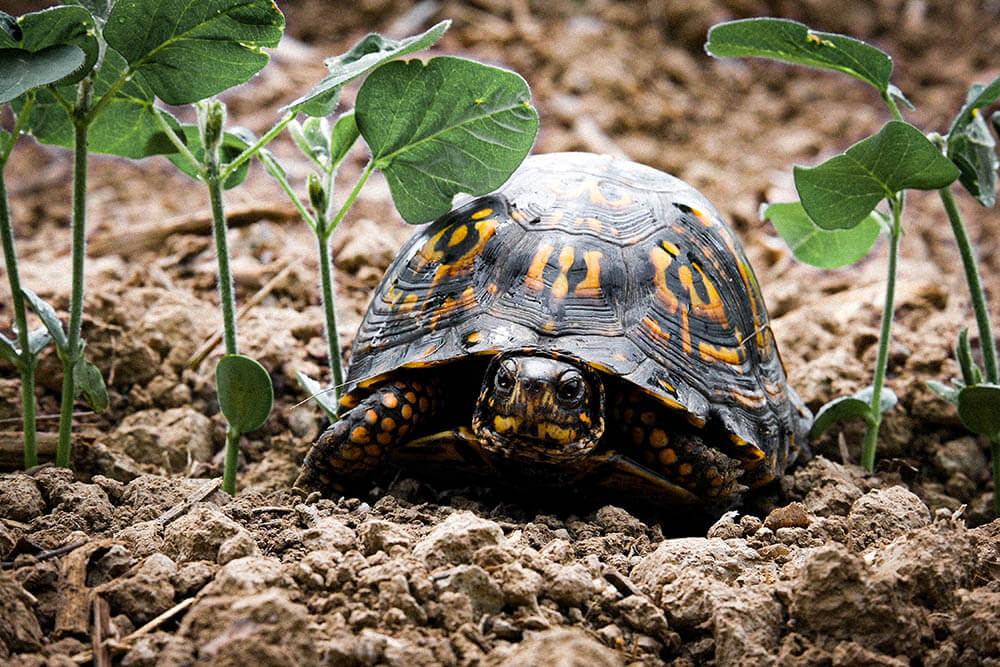
First of All: What is a Box Turtle?
The box turtle belongs to the Emyididae family of reptiles, which includes creatures living in both terrestrial and aquatic environments. They’re native to North America and can be found in the U.S.A. and Mexico.
The six main box turtle species are Common, Mexican, Spotted, Western, Coahuila, and Yucatan. These species also have subspecies.
All the species share similar features, including a black or dark brown shell, also known as a carapace, that’s shaped like a dome. They also have a hinged, flat bottom, which is referred to as a plastron. Both carapace and plastron protect these turtles against predators as well as the elements. In fact, the name “box turtle” comes from the creature’s ability to retract its entire body into its shell as if it’s sealing itself in a tight, closed box.
As reptiles, these creatures exist primarily in the planet’s warmer regions. They’re also a long-lived species, living for 25 to 35 years if given proper care. Some are known to live even longer, reaching 50 or even over 100 years old!
Box turtles are among the most popular reptiles among pet lovers. In the U.S., many of those for sale in pet stores originate from South Carolina.
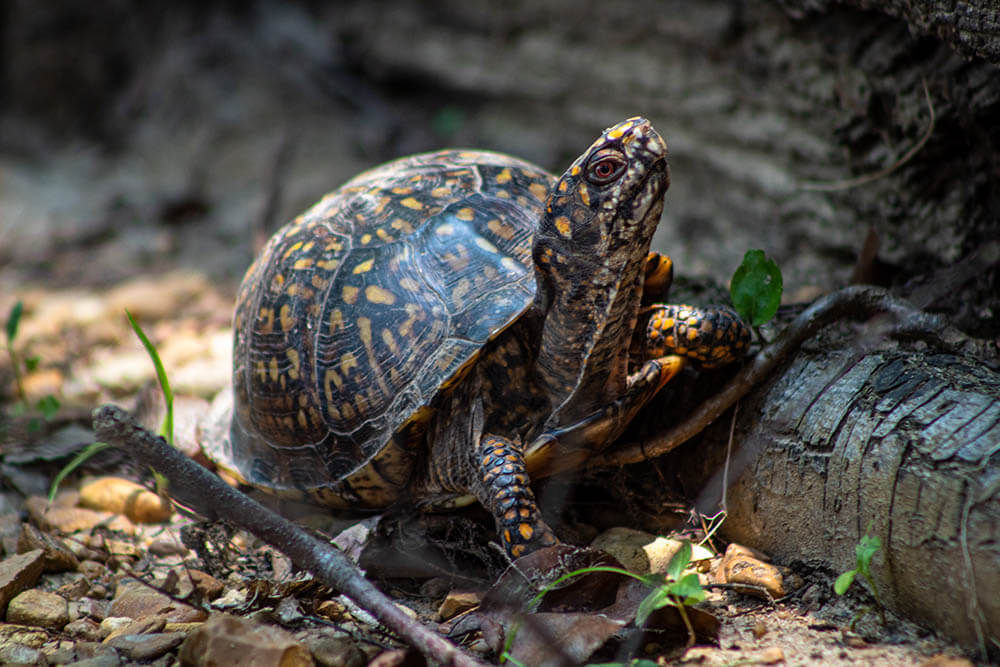
How Box Turtle Size Depends on Age
Like all animals, box turtles grow bigger as they age. Therefore, an individual’s size is a good indication of how old it is.
Check out the table below to see how age affects a box turtle’s size!
| Age | Average length of shell |
| Hatchling 6 months 1 year 2 years 3 years 4 to 6 years | 1 to 2 inches 2 inches 2 to 3 inches 3 to 3.5 inches 3.5 to 4 inches 5 to 7 inches |
In general, female box turtles are slightly larger than males. The average adult male measures 5 to 6 inches in length, whereas the average adult female measures 6 to 7 inches long.
Males and females also have slight differences when it comes to growth rates.
Baby box turtles weigh around 0.1 pounds. Adults weigh about 0.5 to 2 pounds.
How Box Turtle Size Depends on Subspecies
As mentioned in the intro, different box turtle subspecies come in different sizes. In the table below, we list the sizes of the subspecies commonly found in pet stores.
| Subspecies | Length of shell |
| Eastern box turtle Three-toed box turtle Gulf Coast box turtle Ornate box turtle | 4.5 to 6 inches 4 to 6.5 inches 5 to 7 inches, though 8.5 inches was the largest recorded 4 to 6 inches |
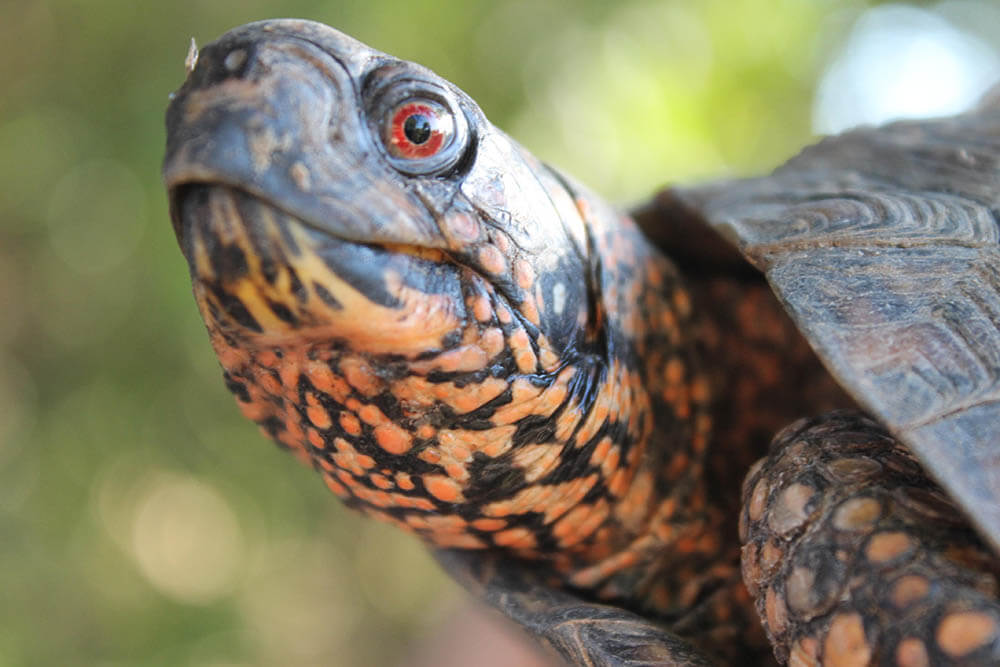
5 Other Factors Affecting Box Turtle Size
In addition to age and subspecies, there are other huge factors affecting box turtle size, such as:
1. Diet
As omnivores, box turtles eat both animal and plant matter. In general, these creatures enjoy a diet that’s 60% meat, 30% vegetables and plant parts such as flowers, and 10% fruits. By eating this way, they gain an amount of minerals and vitamins necessary for healthy growth.
Nutrients most essential to growth include protein, phosphorous, and calcium. Protein is especially important to a younger box turtle, as it provides it with amino acids, which serve as the building blocks for its bones, shell, and other tissues.
Calcium is required for proper bone development, healthy muscular function, and more. Phosphorus is necessary for the bones and shell. A turtle should, however, take calcium and phosphorus at a ratio of 1:1.666, as too much phosphorus can interfere with its calcium absorption, which can negatively impact its size.
Other crucial nutrients include vitamin A, vitamin B1, and fiber.
Turtles in the wild forage for a broad array of food items, allowing them to absorb various important nutrients. Therefore, if you plan on keeping a pet box turtle, you should feed it a diet that mimics what it would eat in its natural habitat. Otherwise, it could end up malnourished, resulting in delayed and/or stunted growth.
It’s also recommended to feed a captive box turtle supplements. This is because some foods don’t contain enough or are completely absent of nutrients it can benefit from. Consider giving your pet supplemental vitamin D, calcium, and phosphorus.
In addition, you can give your pet commercial turtle food, which is formulated to provide pet box turtles with nutrients that can boost their health.
Before giving your pet supplements and commercial turtle food, however, get advice from a veterinarian, as they can determine what nutrients your box turtle requires and whether or not it needs such additions to its diet in the first place.
Pet box turtles are generally slightly larger than their wild counterparts. This is because the former, if properly cared for, enjoy a richer assortment of nutrients than the latter.
2. UVB light exposure
UVB light is a spectrum of UV light that is extremely important to reptiles such as box turtles.
As previously mentioned, box turtles need calcium for the healthy growth of bone and shell tissue. UVB light plays a vital role in the manufacture of vitamin D3, a nutrient that in turn allows the body to absorb calcium. Therefore, if a box turtle lacks access to UVB light, it won’t be able to absorb the appropriate amount of calcium, leading to improper shell and bone growth and/or slower growth. In the worst of cases, it might not grow at all.
To get as much UVB light exposure as possible, a wild turtle has to bask in an area where the sun’s rays are extremely powerful. Thus, it climbs onto the top of large rocks or any place directly exposed to sunlight, then spends hours just lying under the sun.
Instead of letting a turtle roam outdoors in search of sunlight, a pet owner can have their reptilian friend bask under a UVB bulb, which reproduces the effects of the sun’s UVB rays. Because pet box turtles are kept indoors a lot of the time, they’re usually dependent on these bulbs.
Note that there are many types of UVB bulbs; to know which one would be best for your pet, seek veterinary advice.
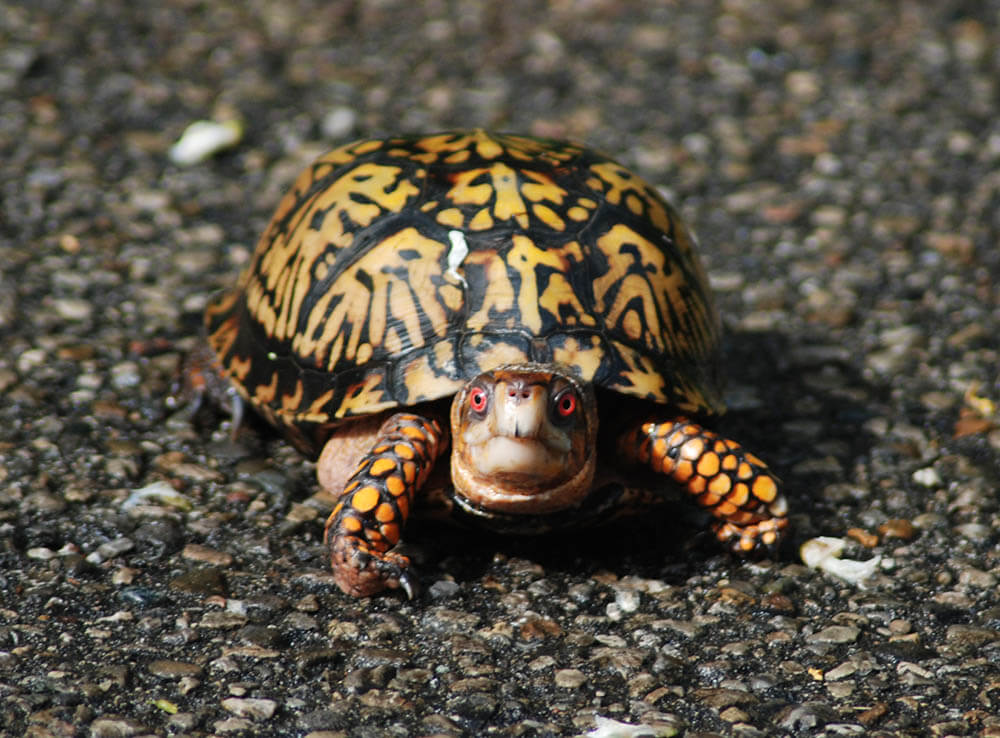
3. Environment
As mentioned above, pet box turtles usually grow larger than wild box turtles because the former have access to more food and therefore more growth-boosting nutrients.
Pets also have greater access to better environmental conditions. For example, if you take excellent care of your pet, it will have regular access to UVB light via UVB bulbs. While a wild box turtle won’t have much trouble finding a spot it can bask under the sun, the unpredictability of the weather means the sun won’t always be out. On cloudy or rainy days, a wild reptile won’t enjoy any sunlight, at all.
The constant danger of predation also means wild box turtles can’t always afford to be out in the open; they’ll have to find a place secure from predators before they can relax under the sunlight.
And then there’s winter. When the temperatures significantly drop, a wild box turtle goes into hibernation. During this period, it doesn’t eat and, as a consequence, doesn’t get any nutrients. Therefore, its body uses up its reserve of energy, proteins, calcium, and vitamins to survive. It also doesn’t enjoy any UVB exposure. All this puts the animal’s growth on hold until the bad weather clears and it wakes up.
As long as you keep a pet box turtle warm (through the use of basking lamps, ceramic heaters, etc.), it won’t have to hibernate. This means it can keep eating, gaining nutrients, and growing.
To summarize, pet box turtles enjoy 12 months of continuous growth per year, while their wild counterparts only have around 7 to 9 months of growth.
4. Genetics
Like many other species, a box turtle’s genetics can influence how big it will get.
Are your pet’s parents tiny? Then there’s a good chance your pet will be tiny, too. Is it suffering from a genetic health problem? This could affect its growth rate, too.
5. Health
Good health is necessary for the proper growth of box turtles.
Medical conditions, including illnesses and diseases, can make a box turtle underweight or slow said turtle’s growth rate. For this reason, it’s best to bring your pet to a veterinarian if it shows any signs of illness.
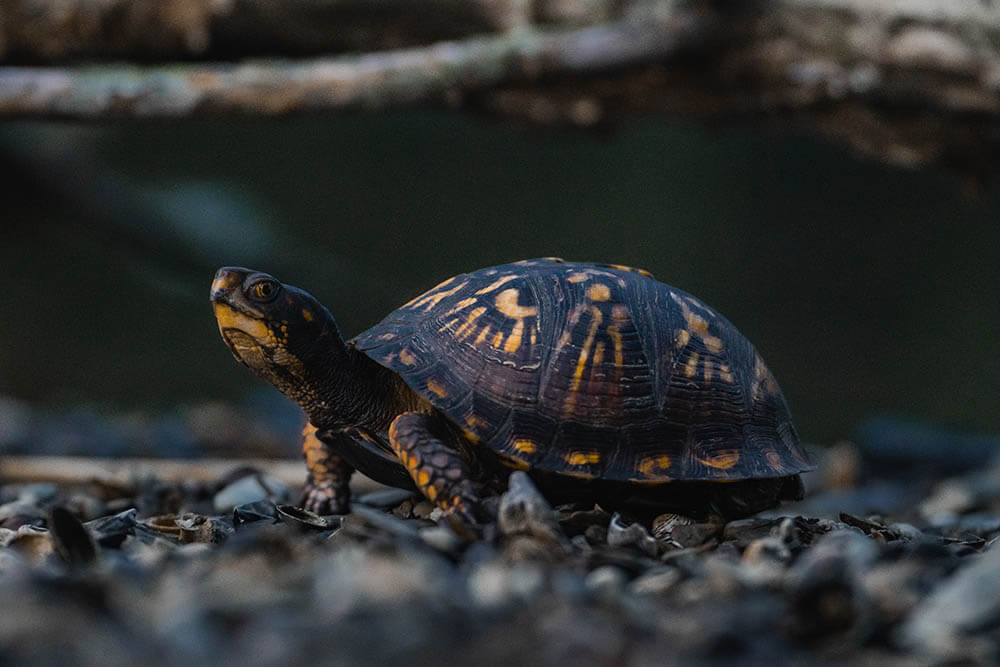
Conclusion
Box turtles are fairly small creatures, generally reaching an average size of between 5 and 7 inches long only.
Nevertheless, many factors can affect a box turtle’s size. Some subspecies can be smaller or larger than the average size. Young turtles are smaller than adult turtles. A turtle’s diet, UVB exposure, environment, genetics, and health can also determine how quickly it grows and how big it gets.
If you have a pet box turtle, make sure you meet all its requirements for healthy growth. This way, you can ensure it reaches an appropriate size upon reaching maturity.
